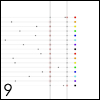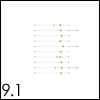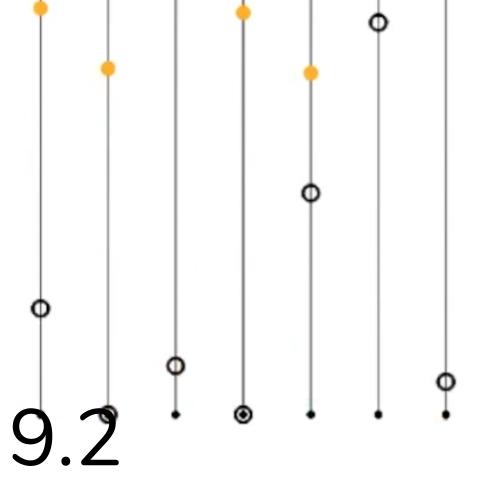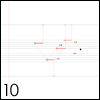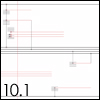Like the animated notation used in Study no. 8, Study no. 8.1 is designed to represent multiple tempi simultaneously, while also allowing for the possibility of unison playing.
Performance Instructions
For 8 players.
Each player follows one hexagon throughout. Only one player should follow each hexagon.
Each player predetermines 6 distinct sounds, ranging from non-pitched to pitched. This may or may not be determined collectively by the ensemble.
Each sound corresponds to one slice of the performer's hexagon. The first slice should be pitched, the last slice non-pitched, with the 2nd through 5th slices becoming increasingly non-pitched.
When the first slice is black, only that slice's corresponding sound should be played.
When the second slice is black, that slice's corresponding sound should be played primarily, although the performer may occasionally play the sound associated with the first slice.
When the third slice is black, that slice's corresponding sound should be played primarily, although the performer may occasionally play the sound associated with the first and second slice.
The final three slices may be treated similarly as the third, allowing for the occasional sounding of the previous two slices.
Performers should play the notated sound each time the attack cursor (spinning circle) crosses an event node (placed at 12, 3, 6, and 9 o'clock respectively) of the circle the player's hexagon is connected to. If a player's hexagon is not connected, that player should not play.
Dynamics: Vary dynamics often and drastically.
Duration: Approx. 15 minutes.
If possible, the Animated Score should be projected for both the performers and audience to see. If this is not possible, one or more monitors can be used.
Ryan Ross Smith, December 2014.
If you would like a copy of this animated score for performance, or have any questions about the animated notation used in this piece, feel free to get in touch! My contact information can be found here.
